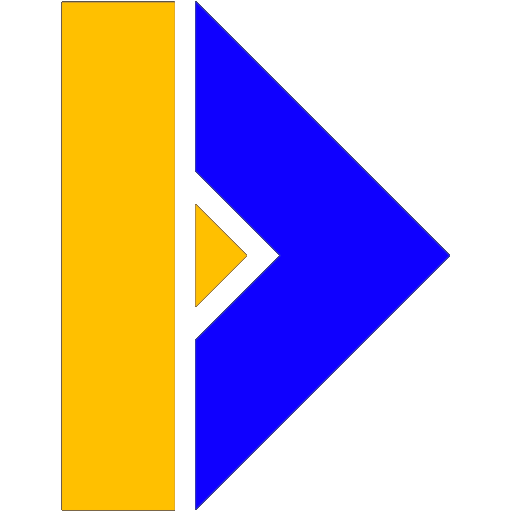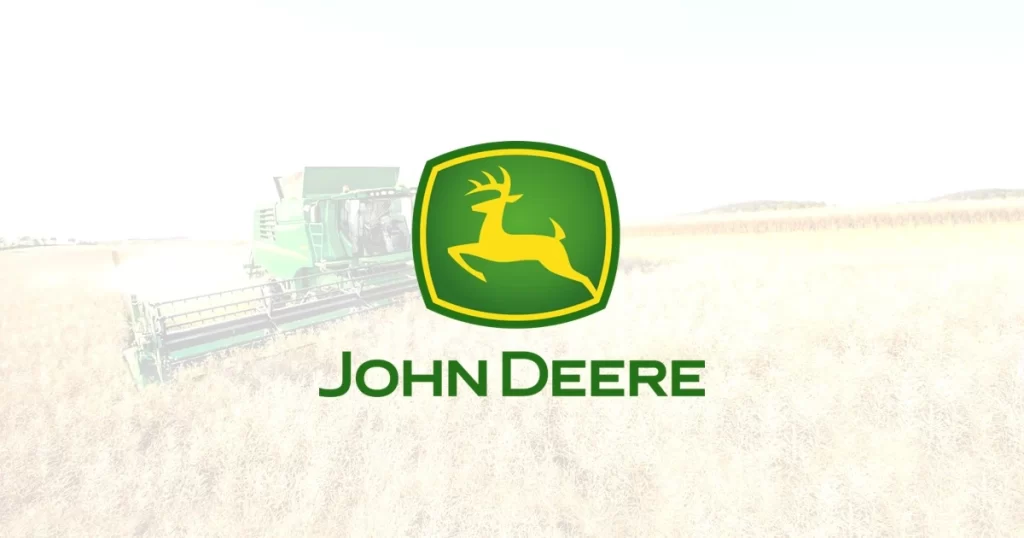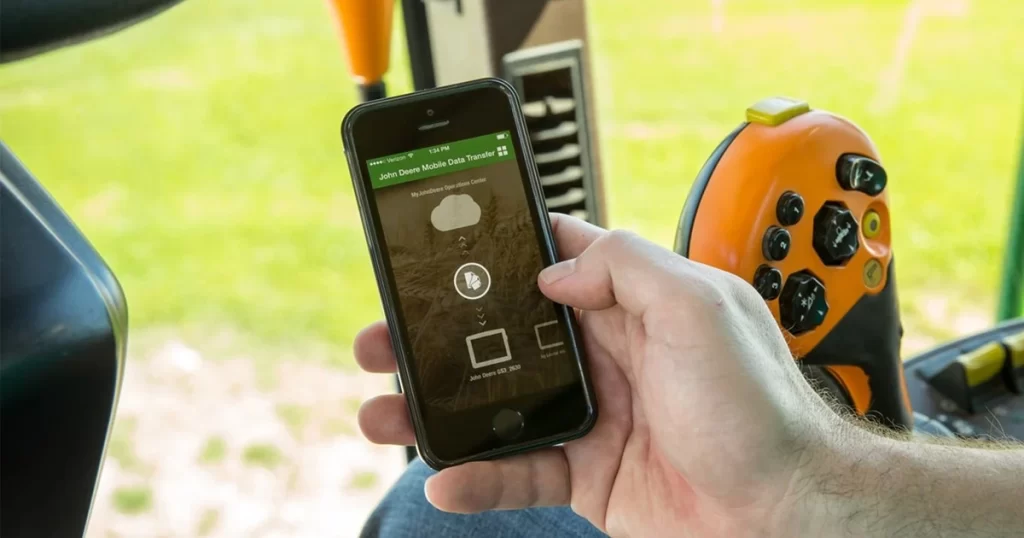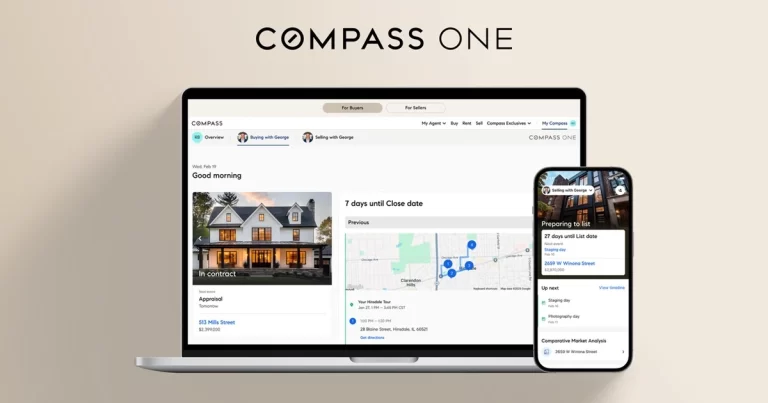Introduction: Transforming Agriculture with IoT and Precision Solutions
John Deere leads the way in IoT in Agriculture, transforming traditional farming into a connected, data-driven ecosystem. As a global leader in agricultural technology, John Deere empowers farmers with connected machinery and real-time data insights, enabling them to optimize operations, increase yields, and adopt sustainable practices.
Through platforms like JDLink™ and the John Deere Operations Center, farmers can monitor equipment, analyze soil and weather conditions, and make data-driven decisions that boost productivity. John Deere’s Leap Ambitions strategy aims to connect over 1.5 million machines and manage 500 million acres by 2026, laying the groundwork for a future of autonomous, AI-powered farming.
This case study examines John Deere’s journey, key challenges, solution implementation, technologies, and the transformative results that have positioned it as an industry leader in smart farming.
Company Overview: John Deere — A Pioneer in Smart Farming
Founded in 1837, John Deere—the brand name for Deere & Company—has evolved from a small plow manufacturer to a global leader in agricultural technology. With a presence in over 30 countries, John Deere consistently pioneers innovations that empower farmers worldwide.
Today, the company’s focus on IoT in Agriculture is transforming farming operations. By embedding connectivity and real-time data into its equipment, John Deere helps farmers manage fields with precision and efficiency. Their Precision Agriculture solutions—such as advanced GPS guidance, variable-rate technology, and real-time equipment monitoring—help farmers reduce costs and maximize yields.
A key differentiator is John Deere’s agricultural data analytics platform. The John Deere Operations Center connects farmers, advisors, and dealers, enabling:
- Seamless data sharing between machines and stakeholders
- Real-time analysis of yield, soil conditions, and equipment performance
- Data-driven decisions that improve farm productivity
John Deere’s ongoing investments in R&D and partnerships ensure it stays ahead of the competition, positioning it as a trusted partner in the digital transformation of agriculture.
Challenges Before IoT Implementation: The Limitations of Traditional Farming
Before John Deere’s bold push into IoT in Agriculture, farmers faced a range of operational and efficiency challenges that limited their ability to maximize yields and profitability. The agricultural sector, known for its traditional practices, struggled to keep up with increasing demands for productivity and sustainability.
Limited Data Insights
One of the biggest challenges farmers faced was the lack of real-time, actionable data to guide daily decisions. Traditional farming methods relied heavily on manual monitoring, which often resulted in:
- Delayed Reactions: Farmers couldn’t respond quickly to pest outbreaks or changing weather conditions.
- Inconsistent Yields: Without precise data, optimizing seed placement, irrigation, and fertilizer use was often based on guesswork.
- Reactive Maintenance: Equipment breakdowns disrupted planting and harvesting schedules, leading to costly delays.
Resource Inefficiencies
The absence of connected technologies also contributed to significant resource inefficiencies. Key issues included:
- Overuse of Inputs: Without variable-rate technology, farmers applied seeds, fertilizers, and pesticides uniformly—often wasting resources and harming the environment.
- Fuel and Labor Costs: Manual operations required more time and manpower, increasing operational expenses.
- Sustainability Concerns: Excessive use of chemicals and water strained ecosystems and reduced long-term farm viability.
Operational Fragmentation
Farm management was often fragmented, with farmers juggling multiple tools, spreadsheets, and disconnected systems. This led to:
- Data Silos: Information collected from different machines couldn’t be easily integrated or analyzed.
- Limited Collaboration: Advisors and agronomists had to rely on manual reports, making it difficult to provide timely recommendations.
- Equipment Downtime: Maintenance schedules were reactive rather than predictive, leading to unexpected equipment failures.
The Growing Need for Precision
As global demand for food increased, farmers recognized the need for more sustainable and efficient farming practices. However, achieving Precision Agriculture was nearly impossible without integrated IoT solutions that could deliver:
- Real-time monitoring of crops and equipment
- Data-driven decision-making
- Predictive maintenance and anomaly detection
By understanding these challenges, John Deere identified a clear opportunity to empower farmers with IoT in Agriculture—transforming these pain points into stepping stones for innovation and growth.
Solution Implementation: How John Deere Brought IoT and Precision to Life
To address the challenges of traditional farming, John Deere rolled out a comprehensive solution that integrated IoT in Agriculture and Precision Agriculture across its product line. The implementation focused on transforming conventional equipment into connected, data-driven machines that help farmers work smarter, not harder.
Step-by-Step Deployment
John Deere’s implementation approach centered on:
- Connected Equipment: IoT sensors embedded in tractors, harvesters, and sprayers collect real-time data on equipment health, soil conditions, and operational performance.
- JDLink™ Connectivity: A cloud-based platform that transmits data from the field to the Operations Center, enabling farmers to monitor and manage equipment remotely.
- Operations Center Integration: A central digital hub that aggregates data, offering dashboards for yields, machine utilization, and agronomic insights—all accessible on any device.
Precision Agriculture Tools
By integrating Precision Agriculture solutions, John Deere empowered farmers to make data-driven decisions that optimize every field pass:
- AutoTrac™ Guidance: Automated steering systems ensure overlap-free field coverage, saving time and fuel.
- Variable-Rate Application: Real-time adjustments to seeding, fertilization, and pesticide application reduce waste and support sustainable practices.
- Predictive Maintenance: Machine learning models analyze equipment data to forecast maintenance needs, reducing unexpected downtime.
Strategic Acquisition: Blue River Technology
A key milestone in John Deere’s implementation strategy was the acquisition of Blue River Technology in 2017. This partnership accelerated John Deere’s capabilities in computer vision and machine learning:
- See & Spray™ Technology: Using computer vision, this system detects individual plants and applies pesticides only where needed—reducing chemical use by up to 90%.
- Integration with IoT Platforms: Data from Blue River’s systems seamlessly integrates with the Operations Center, giving farmers even more granular control over field operations.
Through this strategic rollout of connected equipment, cloud-based management tools, and smart acquisitions, John Deere transformed farming into a data-driven enterprise—laying the foundation for increased productivity, sustainability, and long-term profitability.
Key Features and Technologies: Empowering Farmers with Data-Driven Tools
John Deere’s leadership in IoT in Agriculture rests on a robust suite of technologies that empower farmers to work smarter, not harder. By seamlessly integrating hardware and software, the company transforms data into actionable insights—essential for modern, efficient farming.
Smarter Connectivity for Every Machine
John Deere’s modern equipment—tractors, sprayers, and harvesters—come equipped with IoT sensors that gather and transmit real-time operational data. This connectivity allows farmers to:
- Monitor Equipment Health: Keep track of fuel usage, machine performance, and potential issues, reducing unexpected downtime.
- Optimize Field Operations: Access real-time field conditions, enabling more informed decisions on planting, fertilizing, and harvesting.
Precision Agriculture at Work
At the core of John Deere’s innovation is its commitment to Precision Agriculture, allowing farmers to apply inputs exactly where and when needed.
- AutoTrac™ Guidance: An advanced steering system ensures consistent, overlap-free passes in the field—saving time and resources.
- Variable-Rate Technology: Adjusts seed, fertilizer, and pesticide application on the go, based on in-field data, for optimal efficiency and sustainability.
Data-Driven Insights Through Machine Learning
John Deere leverages artificial intelligence and machine learning to turn raw data into valuable insights that farmers can trust.
- Predictive Maintenance: Algorithms analyze usage patterns to forecast maintenance needs, minimizing unplanned breakdowns.
- Anomaly Detection: Machine learning models flag irregularities—like pest outbreaks or yield anomalies—early, allowing for timely interventions.
- See & Spray™ Technology: Blue River’s computer vision system detects individual plants and applies herbicides only where needed, reducing chemical use by up to 90%. Data from See & Spray™ seamlessly integrates into the Operations Center, giving farmers plant-level control and insights.
Centralized Operations Management
The John Deere Operations Center brings all of these technologies together into one easy-to-use digital platform. Farmers can:
- Analyze data from all connected equipment
- Monitor yields, soil health, and operational performance
- Collaborate with agronomists and advisors seamlessly
Feature Comparison Table
Here’s a snapshot of John Deere’s standout features and their benefits:
| Feature | Description | Benefits |
|---|---|---|
| Connected Equipment | Real-time IoT sensors across tractors, sprayers, and harvesters | Improved efficiency, proactive maintenance |
| AutoTrac™ Guidance | Automated steering for precise, overlap-free field passes | Reduced waste, increased productivity |
| Variable-Rate Technology | Adjusts input application on the fly using real-time data | Resource optimization, cost savings |
| Machine Learning | Predictive maintenance and anomaly detection | Less downtime, smarter decision-making |
| Operations Center | Centralized platform for data analysis and collaboration | Informed decisions, seamless farm management |
By combining these features into an integrated ecosystem, John Deere ensures farmers are equipped to embrace IoT in Agriculture and drive sustainable, data-driven productivity.
Results and Benefits: How IoT Drives Productivity and Sustainability
The rollout of IoT in Agriculture and Precision Agriculture solutions by John Deere has transformed farming operations around the world. Farmers are now reaping tangible benefits in productivity, sustainability, and profitability—showcasing the power of data-driven decision-making.
Growth of Connected Machines and Engaged Acres at John Deere
Between 2021 and 2024, John Deere significantly expanded its IoT footprint: connected machines grew from 440,000 to 750,000—a 70% jump—while engaged acres rose from 315 to nearly 468 million. Precision tools like ExactShot™ reduced fertilizer use by 60%, saving 93 million gallons and $650 million annually in the U.S. Additionally, IoT-driven farming boosted yields by 15–20% and cut water and fertilizer usage by 25–30%—highlighting the real-world value of John Deere’s connected, data-driven approach.
Financial Performance: Precision Ag Segment
From 2022 to 2024, John Deere’s overall revenue rose from $52.6 B to $61.3 B before dipping to $51.7 B in 2024, while the Production & Precision Ag segment, the heart of its IoT and Precision Agriculture offerings, declined from $26.8 B to $20.6 B. Although the PPA share of total revenue dropped from roughly 51% to 40%, it still contributed over $20 B—underscoring the critical role of connected, data-driven farming in John Deere’s financial framework.
Increased Productivity
One of the most significant results has been the marked increase in farm productivity. With real-time data flowing from connected equipment, farmers can:
- Optimize Field Operations: Reduce overlaps, improve planting accuracy, and make the most of every acre.
- Minimize Downtime: Predictive maintenance alerts prevent equipment breakdowns, keeping machinery operational during critical planting and harvesting periods.
- Maximize Yields: Variable-rate application ensures that seeds, fertilizers, and pesticides are applied only where needed—boosting overall crop output.
Sustainability Gains
John Deere’s solutions also support environmentally responsible farming practices:
- Reduced Chemical Usage: Precision Agriculture tools minimize over-application of fertilizers and pesticides, protecting soil and water resources.
- Efficient Resource Management: Data-driven irrigation and planting strategies conserve water and energy.
- Lower Emissions: More efficient equipment operation and route optimization reduce fuel consumption.
Empowered Decision-Making
By centralizing data in the John Deere Operations Center, farmers gain:
- Real-Time Insights: Visual dashboards help farmers quickly interpret yield maps, soil conditions, and machine performance.
- Collaborative Advantage: Sharing data with advisors and agronomists fosters a collaborative approach to farm management, leading to better decisions and faster problem-solving.
By embracing IoT in Agriculture, John Deere has not only modernized farming machinery but also empowered farmers to thrive in an increasingly competitive and sustainable agricultural landscape.
Competitive Landscape: How John Deere Stays Ahead in Smart Farming
As John Deere continues to expand its IoT in Agriculture and Precision Agriculture offerings, it faces stiff competition from a growing number of global players investing heavily in smart farming technologies. The competitive landscape is dynamic, marked by rapid innovation, partnerships, and new entrants seeking to capitalize on the digital transformation of agriculture.
Key Competitors in IoT and Precision Agriculture
Several companies are vying for market share in connected farming solutions, each bringing unique strengths to the table:
- CNH Industrial (Case IH, New Holland): Known for their investments in autonomous tractors and advanced telematics systems, CNH is expanding its suite of precision solutions to help farmers optimize input use and reduce operational costs.
- AGCO Corporation (Fendt, Massey Ferguson): AGCO’s Fuse® platform integrates IoT and precision technologies across its machinery lineup, enabling seamless data collection, variable-rate applications, and smart guidance systems.
- Trimble Agriculture: A leader in GPS and guidance technologies, Trimble partners with equipment manufacturers to deliver precision tools, connectivity, and data analytics to farmers worldwide.
- CLAAS Group: European powerhouse CLAAS focuses on precision harvesting and connectivity, with a strong emphasis on integrating machine data with agronomic insights.
Deere’s Differentiators
Despite this competitive environment, John Deere maintains a strong position thanks to several key differentiators:
- End-to-End Integration: Unlike some competitors who rely on third-party solutions, John Deere’s Operations Center integrates data seamlessly from its connected equipment, providing a unified platform for farmers to manage operations.
- Robust R&D Pipeline: With consistent investments in research and development, John Deere leads in innovation, rolling out features like ExactShot™ fertilizer technology and autonomous tractors that set new industry standards.
- Brand Loyalty: Decades of trust and a strong dealer network give John Deere a unique advantage in customer retention, particularly in regions like North America where green-and-yellow machines dominate the fields.
- Sustainability Leadership: John Deere’s commitment to sustainable farming practices—including reduced emissions, optimized input usage, and regenerative agriculture—resonates with farmers seeking environmentally responsible solutions.
Competitive Snapshot
| Company | Strengths | Focus Areas |
|---|---|---|
| John Deere | End-to-end IoT integration, brand loyalty, innovation | Connected equipment, predictive analytics |
| CNH Industrial | Autonomous tractors, telematics systems | Input optimization, smart guidance |
| AGCO | Fuse® platform, precision planting & harvesting | Variable-rate technology, data integration |
| Trimble | GPS & guidance technology, data analytics | Connectivity, third-party partnerships |
| CLAAS | Harvesting excellence, European market strength | Precision harvesting, agronomic data integration |
In this dynamic environment, John Deere’s ongoing investment in IoT in Agriculture and Precision Agriculture—coupled with its strong dealer network and integrated solutions—positions it well to maintain its leadership role while adapting to emerging competitive pressures.
Conclusion and Lessons from John Deere’s IoT Journey
John Deere’s bold push into IoT in Agriculture and Precision Agriculture has redefined modern farming. By transforming traditional equipment into connected, data-driven platforms, the company empowers farmers to make better decisions, increase yields, and adopt more sustainable practices. From IoT-enabled tractors to advanced guidance systems like AutoTrac™, John Deere’s comprehensive approach sets a new industry standard. Its focus on data integration through the Operations Center fosters collaboration and boosts operational efficiency.
Key Takeaways
- IoT in Agriculture is Transforming Farming: John Deere’s connected machinery and cloud-based platforms empower farmers to monitor and manage their fields like never before.
- Precision Agriculture Drives Efficiency: Tools like variable-rate technology and AutoTrac™ help farmers reduce input costs and boost yields.
- Data-Driven Decisions Are Critical: The John Deere Operations Center centralizes farm data, enabling farmers to collaborate, analyze, and act faster.
- Competition is Fierce but Deere Stays Ahead: Thanks to end-to-end integration, consistent innovation, and a focus on sustainability.
- Future-Proofing Agriculture: With investments in AI, autonomous machinery, and regenerative practices, John Deere is well-positioned to lead the next era of smart farming.





